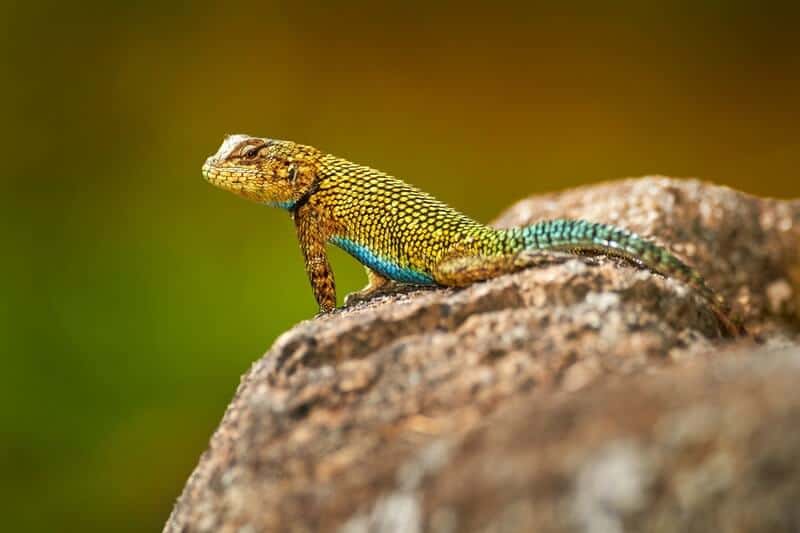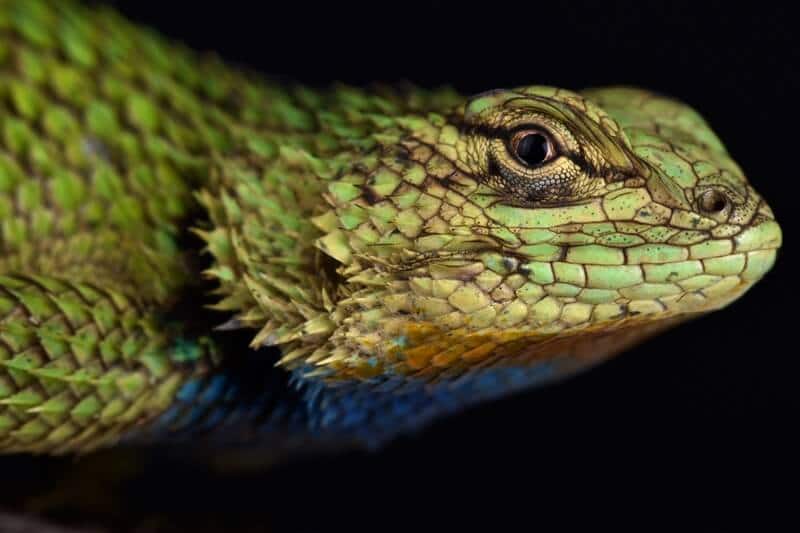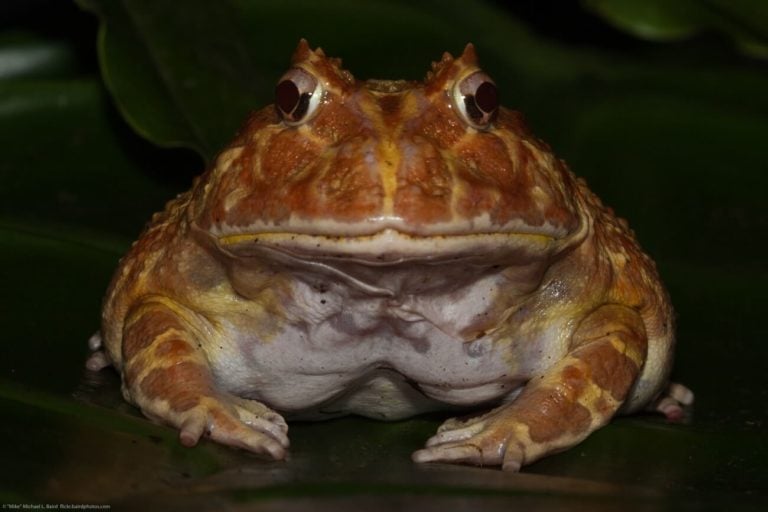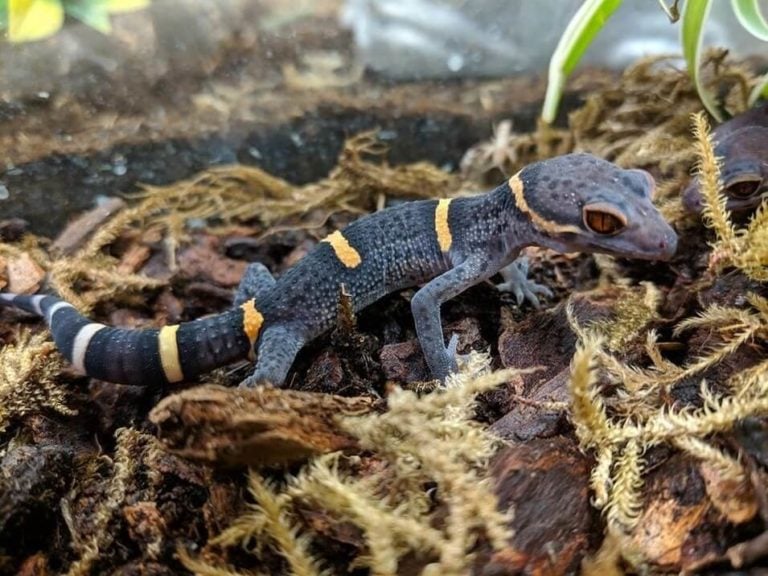Emerald swift lizards are gorgeous reptiles that are also quite unique. Because of this, it’s only natural to wonder what they would be like as pets!
This guide will cover everything you need to know about emerald swift lizard care, and if it’s the right choice for you.
Table of Contents
Species Summary
The emerald swift lizard (Sceloporus malachiticus) is a small lizard that is native to mountain, woodland and rainforest areas of Mexico and Central America. These very active lizards are best matched with intermediate or advanced reptile owners due to their sometimes picky requirements and their active and flighty temperaments.
Most of the emerald swifts that can be found in captivity are wild-caught, exotic pets and will never become tame or friendly. If you’re looking for a pet lizard that can be handled and taken out of the enclosure, then you may want to think twice before getting an emerald swift.
However, if you just want to enjoy observing a beautiful creature in a “natural” environment, then this pet can be a great choice.
Appearance & Colors
Emerald swift lizards are prized for their stunning and unique appearance. Male emerald swifts are a vivid green with blue shading on their bellies and tails. Females are less vivid than males, and their bodies will have brown spots.
In addition to their beautiful coloring, emerald swifts have a compact body that is covered in spiny scales. Add long, slender toes, a compact head and a slender tail, and you have a lizard that is sure to spark interest and conversation.
Average Emerald Swift Size
Growing to no larger than six to eight inches long, the emerald swift is an excellent choice for anyone who is looking for a lizard that’s on the smaller side.
Expert Tip: Males are often slightly larger than females, but eight inches is about as long as they ever get.
Lifespan
Most emerald swift lizards begin their lives in the wild and are captured as adults. Because of this, it’s kind of difficult to determine the exact lifespan of this lizard.
However, once an emerald swift has settled into a well-maintained and healthy enclosure, it has a lifespan of about five years. Emerald swift lizards that are bred in captivity (which is very rare) may live several years longer.
Due to its pretty short lifespan, the emerald swift is often overlooked in favor of lizards that promise a bit more longevity. However, this lizard is a good option for anyone who is not sure if they are interested in a reptile that will require long-term care.
Emerald Swift Care
The emerald swift lizard is definitely one that is best handled by someone with intermediate to advanced experience. Because most emerald swifts are wild-caught, they require considerably more care and attention to detail than other lizards.

Emerald swifts are notorious for their squirmy nature and their tendency to bite. This is not surprising since they are not used to being handled by humans, but this means that they require a certain level of expertise that a beginner doesn’t have.
Emerald swift lizard care means that you are going to have to pay careful attention to the size of the enclosure, the type of substrate that you use, the level of humidity within the enclosure and the temperatures along the thermal gradient. Their diet, temperament and potential health issues are also things that you will have to keep in mind as you care for your emerald swift.
As challenging as it can be to care for an emerald swift, many people feel that it’s well worth the effort.
Enclosure Size & Dimensions
Due to the emerald swift’s small size, many people make the mistake of thinking that its enclosure should be small as well. However, this is an active and curious lizard that needs plenty of space to climb, bask, and explore its living space.
The best enclosure for an emerald swift is a 20 gallon terrarium that is long and narrow. As far as dimensions go, 36 inches long, 18 inches wide and 18 inches tall are good minimum dimensions.
Of course, if you have room for an even larger enclosure, then that’s even better. Emerald swifts are almost always taken from the wild, and they are used to having plenty of places to climb and bask in the sun.
A very important addition to your emerald swift enclosure is a secure screen lid. These lizards will climb to the very top of the enclosure, and they will escape from an enclosure that is not securely covered.
Some people will keep more than one emerald swift housed together, but we recommend keeping them in separate enclosures. Even if you give them plenty of room, lots of places to hide and branches to climb on, there’s a good chance that there will be some fighting over territory. The only time that it’s alright to put emerald swifts together is if you want them to mate.
What To Put In Their Habitat
The items that you place within your emerald swift’s enclosure are as important as the size of the enclosure. Since there’s a good chance that this reptile was caught in the wild, you will want to make their new home as close to their old environment as possible. This will help to promote an easy transition, and your new friend will have a greater chance of happiness and comfort.
Start With An Appropriate Substrate
When designing an enclosure for an emerald swift, it’s best to start with the substrate. The substrate that you choose is quite important because it needs to hold in moisture without becoming too wet or moldy, and it should allow for burrowing and for a soft landing if your swift falls from one of its perches.
Recommended substrates include orchid bark, cypress mulch and green sphagnum moss. For the best results, create a four inch layer using a combination of the above substrates.
Expert Tip: Spot clean the substrate every day, and the entire substrate layer needs to be replaced every three to four months. Remove any fecal matter or urine right away to maintain a clean and healthy environment.
Get Creative
Once you’ve put down the substrate, it’s time to have some fun. There are so many ways to design the enclosure, that you can get super creative. Just remember that your emerald swift is going to need things to climb and lots of places to hide and feel safe. In order to maintain the right level of humidity and to create a more natural environment, we highly suggest adding some natural or artificial foliage.
Some enclosure enhancements include branches, vines, plastic or natural ledges, logs and a selection of rocks for basking. Reptile hides can be purchased at most pet stores, or you can create your own using pieces of bark, plastic bowls or other household items.
If you decide to use real plants in the enclosure, it’s important to make sure that they are safe around your pet. We suggest using ficus plants or bromeliads, but there are other appropriate ones as well.
Temperature & Lighting
Creating an enclosure that provides the correct temperature and lighting for your emerald swift is going to take time, thought and a lot of know-how. Get it right, and you’ll have a pet that’s happy and healthy. Getting it wrong, however, could spell disaster in very little time.
Since your emerald swift lizard can’t regulate its own body temperature, you will have to create an appropriate temperature gradient within the enclosure. This means that you’ll need to set up a part of the enclosure where your lizard can bask and warm up and a part where it can go to cool down.
If you make sure that the basking area remains at about 90 degrees Fahrenheit and the cooler area stays between 72 and 84 degrees, you should be fine. It’s usually fine if the temperature of the enclosure drops slightly at night, but it’s important to make sure that it doesn’t go below 68 degrees.
There are numerous ways to heat your emerald swift’s enclosure, and popular options include heat mats, incandescent heat bulbs, ceramic heaters and infrared bulbs. There’s no right or wrong choice so use the one that works the best for you.
Many pet reptiles don’t require supplemental UVB lighting, but emerald swift lizards definitely do. In fact, without UVB lighting, your swift becomes susceptible to debilitating Vitamin D deficiency. In the wild, these lizards get all of the Vitamin D they need from natural sunlight. Once they live in an enclosure, however, you’ll need to supply supplementary lighting.
The best way to supply UVB lighting is to use a UVB bulb, a halogen heating lamp or a daylight-spectrum lamp. Place your UVB light option about 11 inches above the basking area. In order to mimic natural lighting, you should provide 11 hours of light during the winter and 12-13 hours during the summer.
Humidity
In the wild, emerald swift lizards live in a very humid, tropical environment, so you’ll need to re-create this type of humid atmosphere within your lizard’s enclosure.
For the health and happiness of your emerald swift, a humidity level between 60 and 80 percent is absolutely necessary.
Since humidity levels can be pretty hard to determine, we recommend placing a hygrometer in the middle of the enclosure. Using a hygrometer is the easiest way to ensure that the perfect level of humidity is maintained within the enclosure at all times.
The trick with humidity is that it can be difficult to keep the enclosure moist without making it too wet. You don’t want to create a swamp because too much moisture can cause any number of health issues. The idea is to maintain a balance between moist and wet.
You can keep the humidity of the enclosure at the correct level by gently misting the substrate a couple of times a day, keeping a supply of fresh, clean water in the water bowl and by planting a variety of plants within the terrarium.
If you’re still finding it difficult to maintain the correct humidity level, you could try using a reptile humidifier.
Water
Providing a constant supply of fresh, clean water is an important part of emerald swift care. You don’t need to use anything fancy; a simple, shallow bowl will do just fine. It’s best to use a bowl that’s not tipped over too easily, or you’re going to be constantly cleaning up and replacing the water.
This bowl of water not only supplies fresh drinking water, but it also helps to keep a consistent level of humidity within the enclosure. Make sure to change the water every day, and the bowl should be taken out and cleaned once a week. Of course, if your swift goes to the bathroom in the bowl, or if it looks very dirty, then it should be cleaned sooner.
In addition to a bowl of water, it’s very important to mist your emerald swift with room temperature water about twice a day.
Food & Diet
Good nutrition and a well regulated feeding schedule is a very important part of emerald swift lizard care. Since these lizards are insectivorous, you’ll need to provide a variety of live, gut-loaded insects.
Appropriate options include:
- Dubia roaches
- Crickets
- Discoid roaches
- Mealworms
- Mealworm beetles
- Waxworms
- Black soldier fly larvae
If you have a juvenile emerald swift, then you’ll want to feed it twice a day. However, an adult should be fed three or four times a week.
Only feed your swift as much as it can eat in one feeding, and any food items that are left over should be removed from the enclosure. When choosing an insect for your swift, make sure that it’s no bigger than the space between the lizard’s eyes. Anything larger could cause your lizard to choke.
Even when you are careful to feed your swift only gut-loaded insects, it’s still very important to supplement its diet with vitamin and calcium supplements. There are lots of options, so see which one is recommended by your veterinarian.
Potential Health Issues
Emerald swifts are known to live for only about five years in captivity, so keeping them healthy is going to be very important. There are an assortment of health issues that are associated with these reptiles, so it’s important to be able to recognize a problem before it becomes severe.
Let’s look at a few of the most common health issues related to emerald swifts.
As we mentioned above, emerald swifts require supplemental UVB lighting. Without this type of lighting, your emerald swift may end up with Vitamin D deficiency. Bone deformities, lethargy, pain and swollen limbs are all products of Vitamin D deficiency. You may hear this condition referred to as Metabolic Bone Disease, and it can be very serious if left untreated.
The good news is that this condition can almost always be avoided by using an appropriate form of UVB lighting and by giving your swift Vitamin D supplements and gut-loaded prey.
Another thing to watch out for is respiratory infection. This can be caused by too much moisture in the enclosure and by temperature fluctuations. Signs of respiratory distress include labored breathing, nasal discharge and general lethargy. Contact your veterinarian right away if you suspect a respiratory infection.
Your emerald swift may develop painful skin sores if it is having difficulty shedding, or if it did not shed completely. Unshed skin can become dry and hard and will cause problems over time. In order to help your emerald swift shed properly, make sure that it has an area where it can submerge in clean water. Keeping the humidity at a proper level will also help to ensure complete shedding.
Behavior & Temperament
Emerald swift lizards are not usually very aggressive, but they may bite if they are scared, stressed, or if they are handled too often. What these lizards are particularly known for is a tendency to be very squirmy, wiggly and quick. If not handled properly, they will be out of your hands in a flash.
In the wild, emerald swift lizards are arboreal creatures that like nothing better than to bask in the sunshine at the top of a tree while digesting their latest meal. This is why you will often find your emerald swift hanging out near the top of its enclosure.
These gorgeous lizards are diurnal, so they are the most active during the daytime hours. This is wonderful for you, as a pet owner, because you’ll be able to observe and enjoy all of your lizard’s behaviors and antics.
Handling Them
Emerald swifts don’t really like to be handled. In fact, it’s best to handle these animals only when it’s absolutely necessary. You’ll have to handle it when you clean its enclosure or take it to the veterinarian, but even this handling should be kept to an absolute minimum.
Because emerald swifts are known to get nervous when they’re picked up, they can be very wiggly and hard to hold. Anytime you’re going to handle your emerald swift, you should do it in a place where if they squirm out of your hands, they won’t get hurt or get lost.
Be very careful when handling emerald swifts because they have a tendency to bite when frightened, so learning correct handling techniques is super important. Showing your emerald swift gentle confidence during handling may help to lessen some of the stress of the procedure, and there will be less of a chance that you or your pet will be hurt.
Expert Tip: Emerald swift lizards are often carriers of salmonella, so wash your hands well after handling. Wearing gloves to handle your swift is another option.
Wrapping Up
As you can see, there’s a lot to consider when it comes to emerald swift lizard care. These reptiles aren’t for everyone, so it’s important to think about their requirements before you get one.
If you have any questions about these lizards that weren’t addressed in the care sheet above, send them over. We’re always willing to help out our readers!



